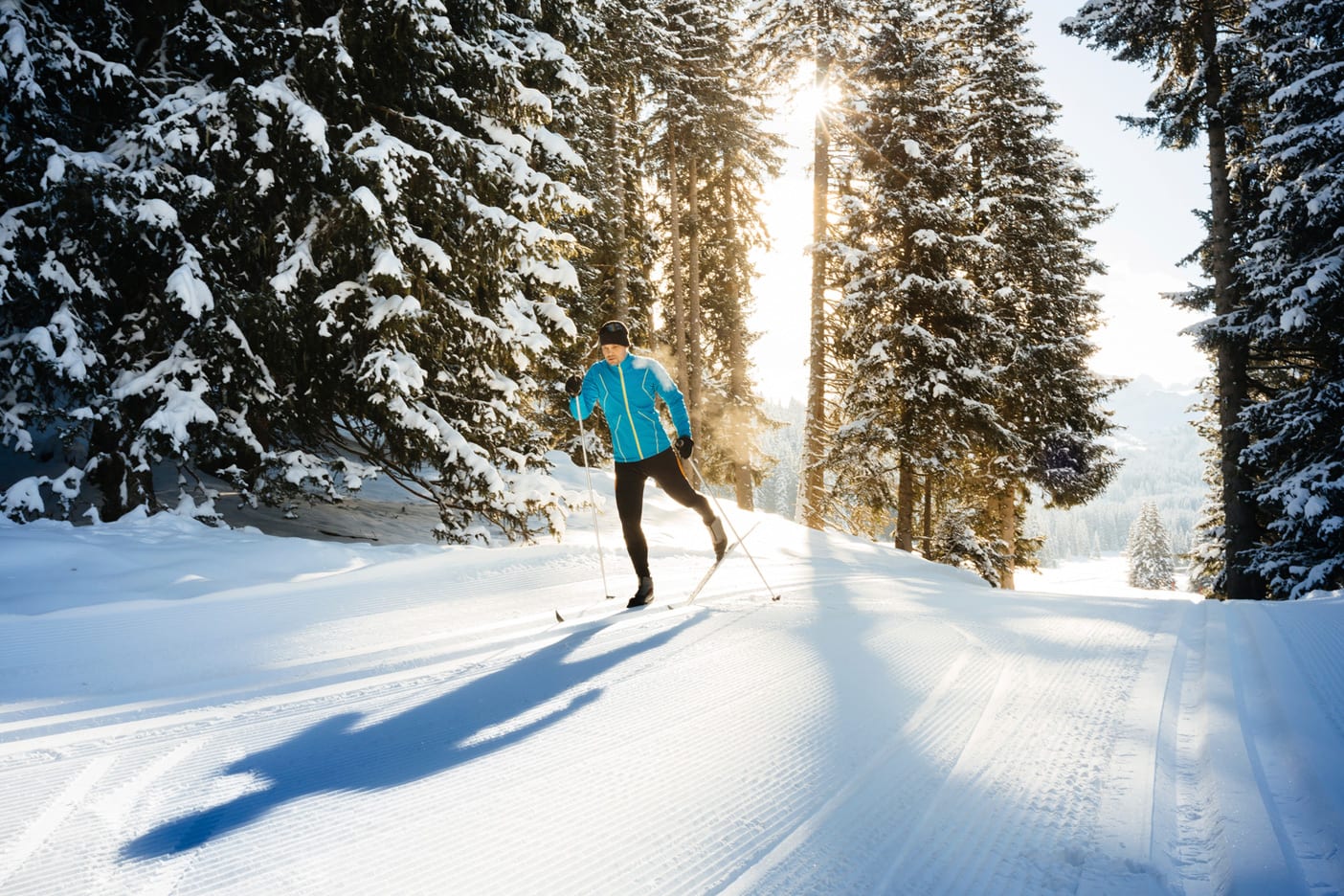
Your endurance activities shouldn’t stop once the snow starts to fall. In fact, winter is one of the best times to get out and elevate your heart rate.
Outdoor winter sports like snowshoeing, skiing, snowboarding, cross-country sking, fat biking and Yaktrax running get you in nature rather than the gym, and these activities can be amped up or toned down, depending on what you are looking for out of any given session.
Top Tier Fitness Tips
Even in the snow, endurance coach Ellen Miller leads groups in the early hours of the day from the Vail Vitality Center in Colorado to get them moving outside.
Ellen is the only American women that has summited Mount Everest from both Nepal and Tibet — one of five women in the world — which is one of her numerous mountaineering and athletic triumphs. This makes it hard to believe that she has had a bilateral hip replacement, proving her strength of mind and body, and encouraging aging athletes to keep their bodies active.
She is a big advocate of interval training, once known as “speed work,” as it has been proven to improve athletic performance, heart health, and specifically targets visceral fat tissue, which lives around the gut.
“This is a very efficient way to exercise,” explains Ellen, who recommends Yaktrax for running up a snow-covered Vail Mountain. “It’s a big ol’ calorie burner, with a big ol’ after burn, which means that for three to four hours after your done with an interval session, your metabolism is still revved up.”
These sessions include about 12 to 18 mintutes of blow-out, zone 5 heart rate work, with the time in between bouts to recover to an active resting heart rate. Interval training is intense on the body, so it’s not recommended more than two or three times per week.
Ellen also leads an endurance session once a week, which keeps participants in heart rate zones 1 and 2, allowing for a slower, conversational pace.
“I always say the hardest part of my job is slowing people down on some days in order to make them faster in the big picture,” she says. “What we are finding in the world of coaching is that everybody likes to go out and do the same thing, every time they exercise; they go out for the same amount of time, run the same distance, the same kind of terrain, and their sweat rate is probably even the same.
“What happens,” she continues, “is that your body gets used to that. Your body has it wired, and becomes very efficient, so there’s nothing new happening — your not losing weight and your not getting faster. It’s a term these days we are calling ‘junk mileage,’ because the athlete is really not accomplishing anything.”
Ellen says that if people can slow down on some of their days, stay in that zone two, conversational level heart rate area, they will find increased overall endurance and create more cardio benefits.
Whether you’re running or sliding through the flurries this season, take advantage of getting out and moving your body — when it’s sunny, and when it’s snowy. Staying up on your interval and endurance training will ensure that your fitness stays strong through the winter and straight into summer.
—
Kim Fuller grew up in the Colorado mountains and has always found beauty and inspiration through nature and movement. Kim is a freelance journalist and a yoga teacher based in Vail. Her writing and photo work has focused on health, wellness, recreation, food and travel since 2007, and Kim began her yoga practice in Boulder, followed by her first teacher training with Real Evolution Yoga at Peace Retreat Costa Rica in November of 2012.
